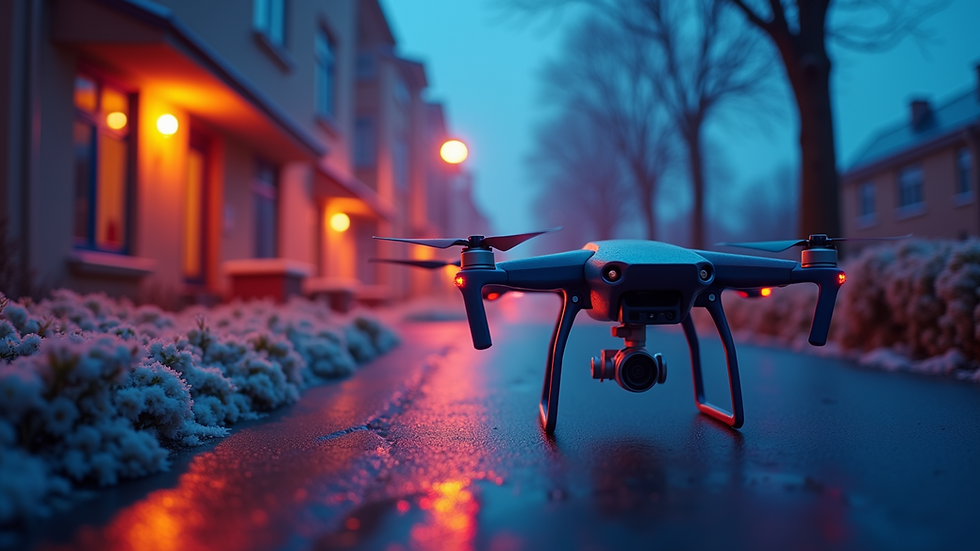Innovative Technology for Finding Lost Pets
- allpawsreunited
- Jun 23
- 4 min read
Losing a pet can be one of the most stressful experiences for any pet owner. Every year, thousands of pets go missing, and statistics show that only a small percentage are found and reunited with their families. Fortunately, innovative technology is paving the way for pet owners to find their lost pets more efficiently and effectively. Here, we explore some of these technologies, how they work, and the impact they have on the pet recovery process.
How Technology Saves Lost Pets
Modern technology has revolutionized the way we search for lost pets. Today, we have tools at our disposal that not only improve our chances of finding a lost animal but also help in understanding their habits and locations. From GPS trackers to mobile apps, let's delve into some of the most effective solutions available.
GPS Tracking Collars
One of the most popular technologies for keeping track of pets is the GPS tracking collar. These collars allow pet owners to monitor their animals’ whereabouts in real-time. Many GPS collars come equipped with features like geofencing, which alerts owners if their pet leaves a designated safe zone.
For example, if your dog wanders outside your yard while you’re at work, you’ll receive an instant notification on your smartphone. This technology is especially beneficial for dogs with a tendency to roam, as it provides peace of mind and a faster recovery solution.


The Rise of Social Media in Pet Recovery
In today’s digital age, social media has become a powerful ally in the search for lost pets. Many pet owners take to platforms like Facebook, Twitter, and Instagram to spread the word about their missing pets. Community groups dedicated to lost and found pets exist in various regions, allowing for more localized sharing of information.
The level of engagement in these groups can be profound. Posts can be shared rapidly within a community, increasing the likelihood that someone has spotted your lost pet. Additionally, many organizations and shelters actively monitor these platforms, providing even more resources for pet recovery.
Thermal Imaging Technology
Another cutting-edge technology being used in the search for lost pets is thermal imaging. This technology is particularly useful for locating pets that have taken refuge in hidden or hard-to-reach areas. Thermal imaging cameras can detect the heat emitted by animals, allowing search teams to identify their location even in dense foliage or darkness.
Some animal rescue organizations have begun using thermal imaging drones to cover large search areas effectively. These drones provide aerial views, enabling searchers to spot animals that might otherwise go unnoticed. The use of such technology has yielded successful outcomes in many recovery stories.

The Role of Lost Pet Drones
Drones have moved beyond their initially perceived applications. Now, they play an integral role in the search and recovery of lost pets. Equipped with high-resolution cameras and advanced thermal imaging technology, these drones can cover vast areas quickly and efficiently.
The functionality of lost pet drones is impressive. With the ability to fly over neighborhoods and into remote locations, they provide a unique perspective that ground searchers simply cannot achieve. Some services even specialize in using drones specifically for pet recovery, offering their expertise to local communities.
To learn more about how drones are changing the landscape of pet recovery, check out lost pet drones.
Microchipping: A Long-Term Solution
While high-tech solutions are fantastic for immediate recovery efforts, microchipping offers a long-term prevention strategy against pet loss. A microchip is a small device implanted under your pet's skin that contains a unique identification number. If a lost pet is found and taken to a shelter or a veterinarian, they can be scanned for a microchip, which can help reunite them with their owner.
One of the great advantages of microchipping is that it does not rely on batteries or maintenance. It is a permanent form of identification that lasts a lifetime. According to the American Animal Hospital Association, microchipped pets are 20 times more likely to be reunited with their owners than those without chips. This technology has become standard in many adoption programs, further enhancing its effectiveness.
Final Thoughts on Innovations in Pet Recovery
As technology continues to advance, the methods available for locating lost pets become more effective and accessible. Whether it's the use of GPS tracking collars, innovative mobile apps, or even the implementation of drones, the landscape of pet recovery is changing for the better.
Pet owners should consider incorporating these technologies into their pet care routines. Being proactive can significantly increase the chances of a quick reunion should your beloved companion go missing. Combined with traditional methods, innovative tools and technologies create a robust system for finding lost pets effectively.
By investing in these advancements, staying connected through social media, and utilizing community resources, all pet owners can take action to ensure their furry friends are always safely at home.





Comments